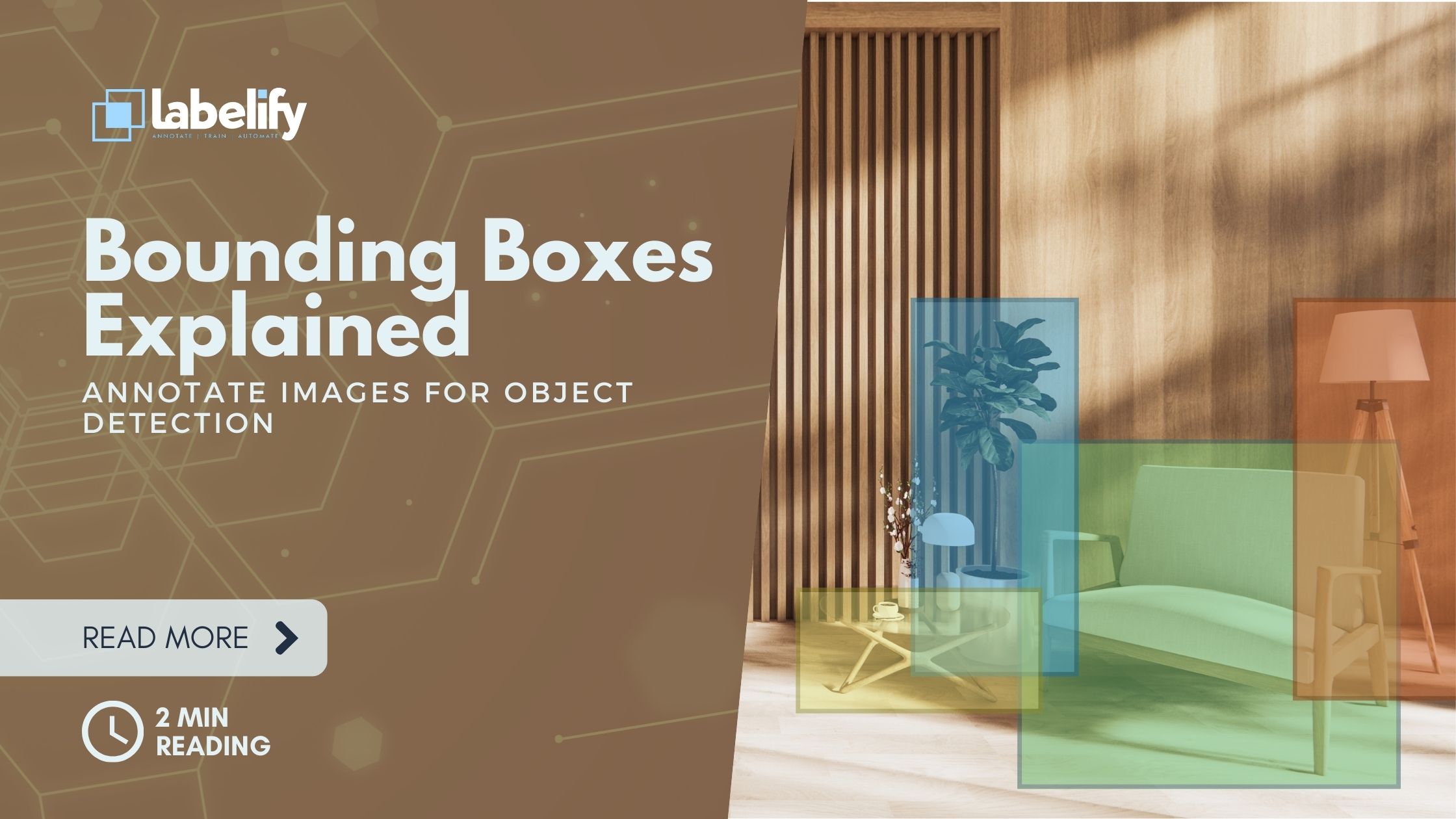In this article, we’ll delve into the world of bounding box annotation and its pivotal role in computer vision. By mastering this technique, we can enhance object detection and achieve higher prediction rates.
We’ll explore the significance of bounding boxes, the challenges they pose, and the benefits of outsourcing annotation services.
Join us as we unlock the potential of bounding box annotation and revolutionize the way we perceive and identify objects in the world of visual perception.
Key Takeaways
- Bounding boxes are rectangles used for object detection in computer vision.
- Bounding boxes make it easier for algorithms to find and recognize objects in images.
- Bounding boxes are fundamental for image annotation in computer vision tasks.
- Bounding boxes enhance object detection in visual perception models.
Importance of Bounding Box Annotation
Bounding box annotation plays a crucial role in improving the accuracy and effectiveness of object detection models. By using bounding box annotation techniques, we can precisely define the boundaries of objects in images, enabling the machine learning algorithms to identify and classify them accurately. This annotation process ensures that the training and testing data for models are of high quality, leading to better prediction rates.
To maintain annotation quality control, it’s essential to follow best practices such as tightly enclosing the object within the bounding box, avoiding overlapping boxes, and maintaining consistency in size and aspect ratio. Regularly reviewing and validating the quality of bounding box annotations is also necessary.
With these techniques and practices, we can enhance object detection in visual perception models, enabling machines to spot targets accurately and empowering them to achieve liberation in their ability to perceive and understand the world.
Benefits and Best Practices
To enhance object detection models, we can maximize the benefits and improve the annotation process by implementing best practices for bounding box annotation.
Precision and recall in bounding box annotation are crucial for achieving accurate object detection. To ensure precise localization of objects, it’s important to tightly enclose the object within the bounding box. Techniques for handling occluded objects can be employed, such as using multiple bounding boxes for complex object shapes.
Consistency in the size and aspect ratio of bounding boxes should be maintained. Accurate labeling guidelines for different object types should be followed.
Regularly reviewing and validating the quality of bounding box annotations is essential.
Challenges in Annotation
Moving on to the challenges in annotation, we must address the complexities that arise when annotating bounding boxes for object detection models. These challenges require innovative solutions to ensure accurate and efficient annotations. Here are three key challenges in bounding box annotation:
- Dealing with occlusion: Objects that are partially or fully occluded present a challenge in accurately annotating their bounding boxes. Annotators need to carefully analyze the visible parts of the object and make educated estimations to define the bounding box boundaries.
- Handling object variations: Objects can vary in shape, size, and orientation, making it difficult to define a single bounding box that encompasses all instances. Annotators need to adapt to these variations by adjusting the bounding box dimensions to accurately represent the object’s boundaries.
- Maintaining annotation consistency: Consistency in annotation is crucial for training reliable object detection models. Annotators must adhere to consistent guidelines, ensuring that the same object is annotated consistently across different images and annotators.
Bounding Boxes for Object Detection
Now, let’s delve into how bounding boxes contribute to the task of object detection by asking ourselves: How do bounding boxes enhance the accuracy and efficiency of object detection models?
Bounding boxes play a crucial role in object localization and annotation techniques. They provide precise information about the location of objects in images, enabling machines to detect and recognize them accurately.
By tightly enclosing the target object within a bounding box, machines can better understand the object boundaries, analyze its size and shape, and make more accurate predictions. However, it’s important to note that bounding boxes alone don’t guarantee the highest prediction rates.
Different annotation techniques may be more suitable for specific projects, and it’s essential to maintain consistency and accuracy in the annotation process. By mastering bounding box annotation, we can boost the performance of object detection models and unlock their full potential in various applications.
Outsourcing Annotation Services
As we continue our exploration of object detection and the role of bounding boxes, let’s now shift our focus to the benefits of outsourcing annotation services.
Outsourcing annotation services can provide numerous advantages, including:
- Cost-effective solutions: Outsourcing annotation services can be a cost-effective alternative to hiring and training an in-house team. By leveraging the expertise of professional annotation providers, businesses can save on recruitment, training, and infrastructure costs.
- Annotation quality control: Outsourcing annotation services often come with built-in quality control mechanisms. Experienced annotation providers employ rigorous quality assurance processes to ensure accurate and reliable annotations. This helps in maintaining high-quality training data for object detection models.
- Scalability and flexibility: Outsourcing annotation services offer the advantage of scalability and flexibility. Annotation providers can quickly adapt to changing project requirements and accommodate large-scale annotation projects. This allows businesses to focus on their core competencies while ensuring timely and accurate annotations.
Frequently Asked Questions
What Are Some Common Industries That Rely on Bounding Box Annotation for Object Detection?
Common industries relying on bounding box annotation for object detection include autonomous vehicles, retail, and e-commerce.
Bounding box annotation plays a crucial role in enabling self-driving cars to detect and analyze various objects such as traffic lights, lanes, and pedestrians.
In the retail and e-commerce sector, bounding box annotations aid in accurate product visualization and search results.
These industries benefit from the precise localization and classification provided by bounding box annotations, enhancing their object detection capabilities.
How Do Bounding Boxes Contribute to the Accuracy of Object Detection Models?
Bounding boxes contribute to the accuracy of object detection models by providing precise localization of objects and aiding in training machine learning algorithms.
Accurate bounding box annotations are crucial for training object detection models, as they help the models understand object boundaries, size, and shape.
Are There Any Specific Guidelines for Annotating Small or Occluded Objects With Bounding Boxes?
When annotating small or occluded objects with bounding boxes, there are specific guidelines to follow. It can be challenging to accurately annotate these objects due to their size or lack of visibility.
Additionally, annotating objects with complex shapes may require multiple bounding boxes to capture all the details. These challenges highlight the importance of maintaining annotation consistency and balancing accuracy and efficiency.
What Are Some Alternative Annotation Techniques That Can Be Used in Addition to Bounding Boxes for Object Detection?
There are alternative annotation techniques that can be used in addition to bounding boxes for object detection.
One such technique is semantic segmentation, which involves labeling each pixel in an image with its corresponding class.
Another technique is instance segmentation, which not only labels pixels but also distinguishes between different instances of the same class.
These techniques provide more detailed and precise information about the objects in an image, allowing for improved object detection accuracy and understanding.
Can Labelify’s Marketplace Handle Annotation Projects Involving Both Images and Videos?
Yes, Labelify’s marketplace can handle annotation projects involving both images and videos.
The benefits of using video annotation for object detection include capturing dynamic object behavior and providing a more comprehensive understanding of object movement.
However, annotating videos for object detection poses challenges compared to images, such as dealing with temporal consistency, object occlusion, and the need for additional annotation tools.
Labelify’s platform addresses these challenges and provides efficient and accurate video annotation services.
Conclusion
In conclusion, mastering bounding box annotation is paramount in achieving accurate object detection in computer vision models. By providing precise localization and consistent annotation quality, bounding boxes serve as the foundation for training and testing data, enabling algorithms to identify and recognize objects in images.
Despite the challenges associated with annotation, outsourcing services such as Labelify marketplace can ensure efficient and high-quality results.
With the continuous advancement of technology, bounding box annotation plays a crucial role in various industries, revolutionizing target spotting and enhancing visual perception models.




